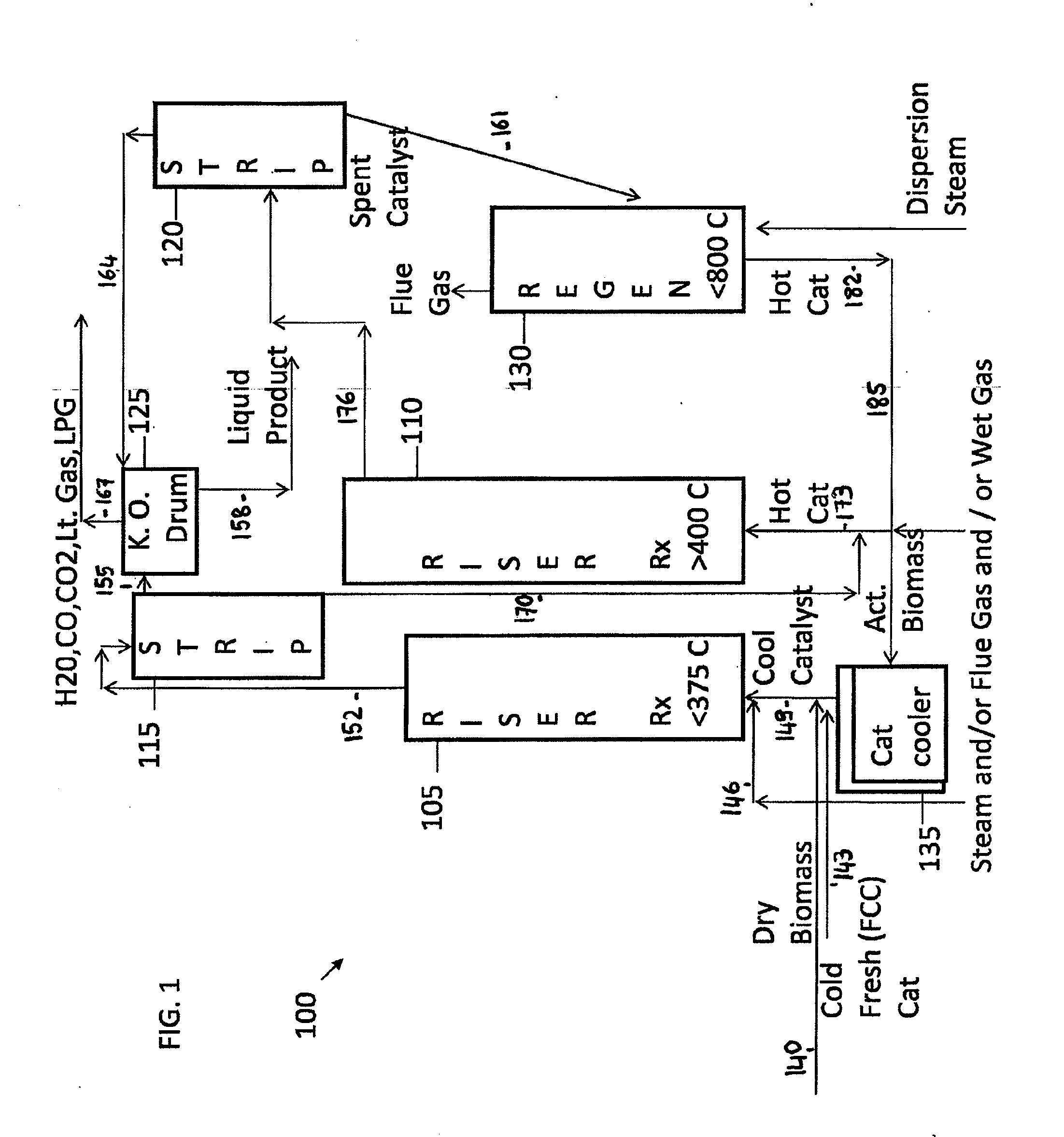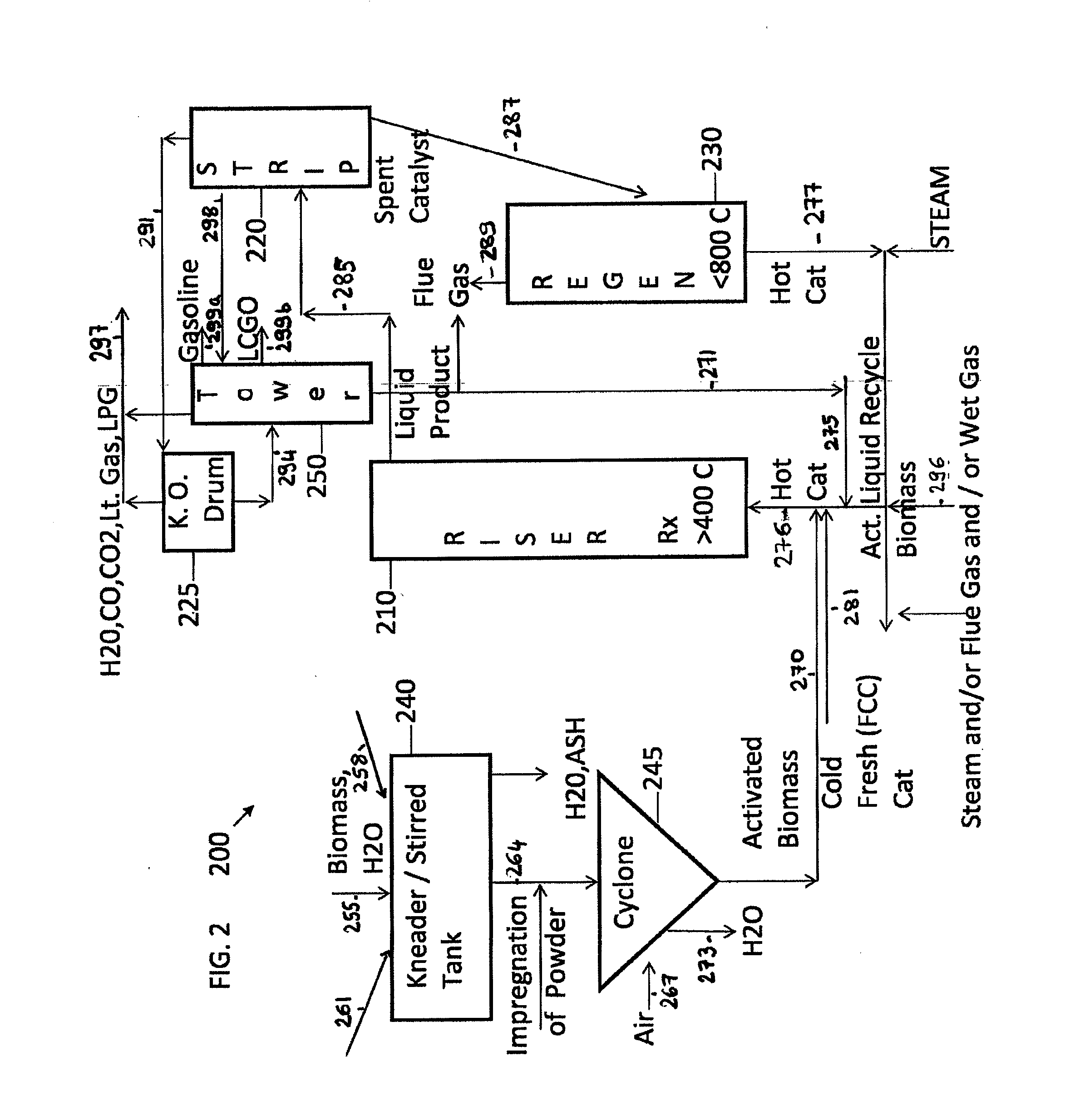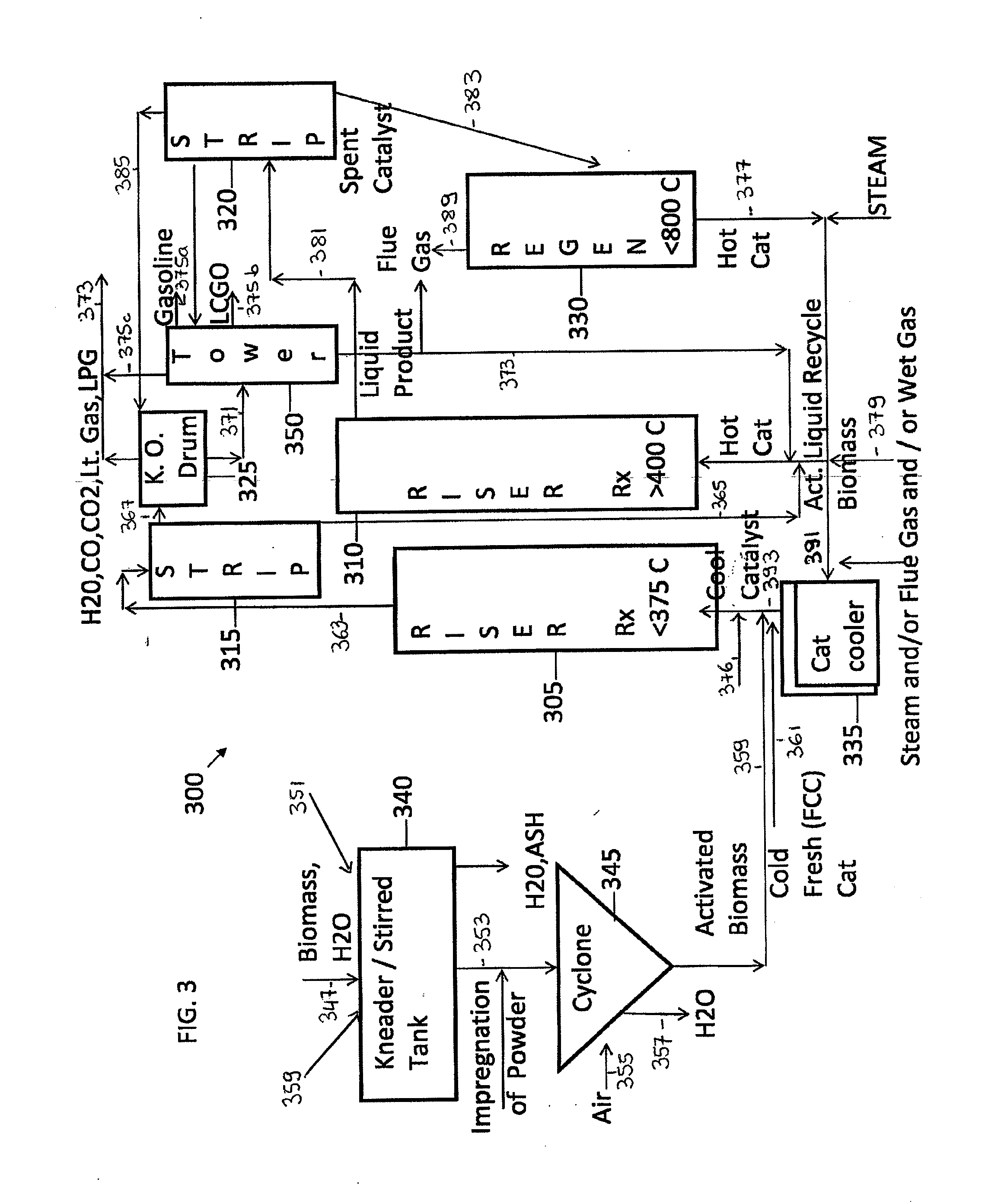Methods for Co-Processing of Biomass and Petroleum Feed
a technology of biomass and petroleum feed, which is applied in the direction of biofuels, fuels, organic chemistry, etc., can solve the problems of increasing financial and ethical issues, requiring specialized and/or costly conversion processes and/or refineries, and requiring upgrading, etc., to achieve the effect of reducing equipment costs, energy costs, and/or degradation or undesirable reactions, and improving the conversion of biomass into fuels and/or specialty chemicals
- Summary
- Abstract
- Description
- Claims
- Application Information
AI Technical Summary
Benefits of technology
Problems solved by technology
Method used
Image
Examples
examples
[0091]FIGS. 1-4 illustrates exemplary systems for preparing and processing biomass with catalyst.
[0092]With reference to FIG. 1 a schematic illustrating an embodiment of various piping and equipment connections of a process for producing fuel from biomass material (described above) is disclosed. In particular, FIG. 1 illustrates a biomass material catalytic cracking system 100 adapted for processing biomass material. In an embodiment, the catalytic cracking system 100 may include at least the following: a first riser 105, a second riser 110, a first stripper 115, a second stripper 120, a knock out drum 125, a regenerator 130, and a catalyst cooler 135 to optimize bio-oil yield. In an embodiment, one or more of the first riser 105, second riser 110, first stripper 115, a second stripper 120, first knock out drum 125, and regenerator 130 may be part of a preexisting catalytic cracking system (not shown). The preexisting catalytic cracking system (not shown) may be retrofitted for proc...
PUM
| Property | Measurement | Unit |
|---|---|---|
| mean average particle size | aaaaa | aaaaa |
| temperature | aaaaa | aaaaa |
| temperature | aaaaa | aaaaa |
Abstract
Description
Claims
Application Information
 Login to View More
Login to View More - R&D
- Intellectual Property
- Life Sciences
- Materials
- Tech Scout
- Unparalleled Data Quality
- Higher Quality Content
- 60% Fewer Hallucinations
Browse by: Latest US Patents, China's latest patents, Technical Efficacy Thesaurus, Application Domain, Technology Topic, Popular Technical Reports.
© 2025 PatSnap. All rights reserved.Legal|Privacy policy|Modern Slavery Act Transparency Statement|Sitemap|About US| Contact US: help@patsnap.com



